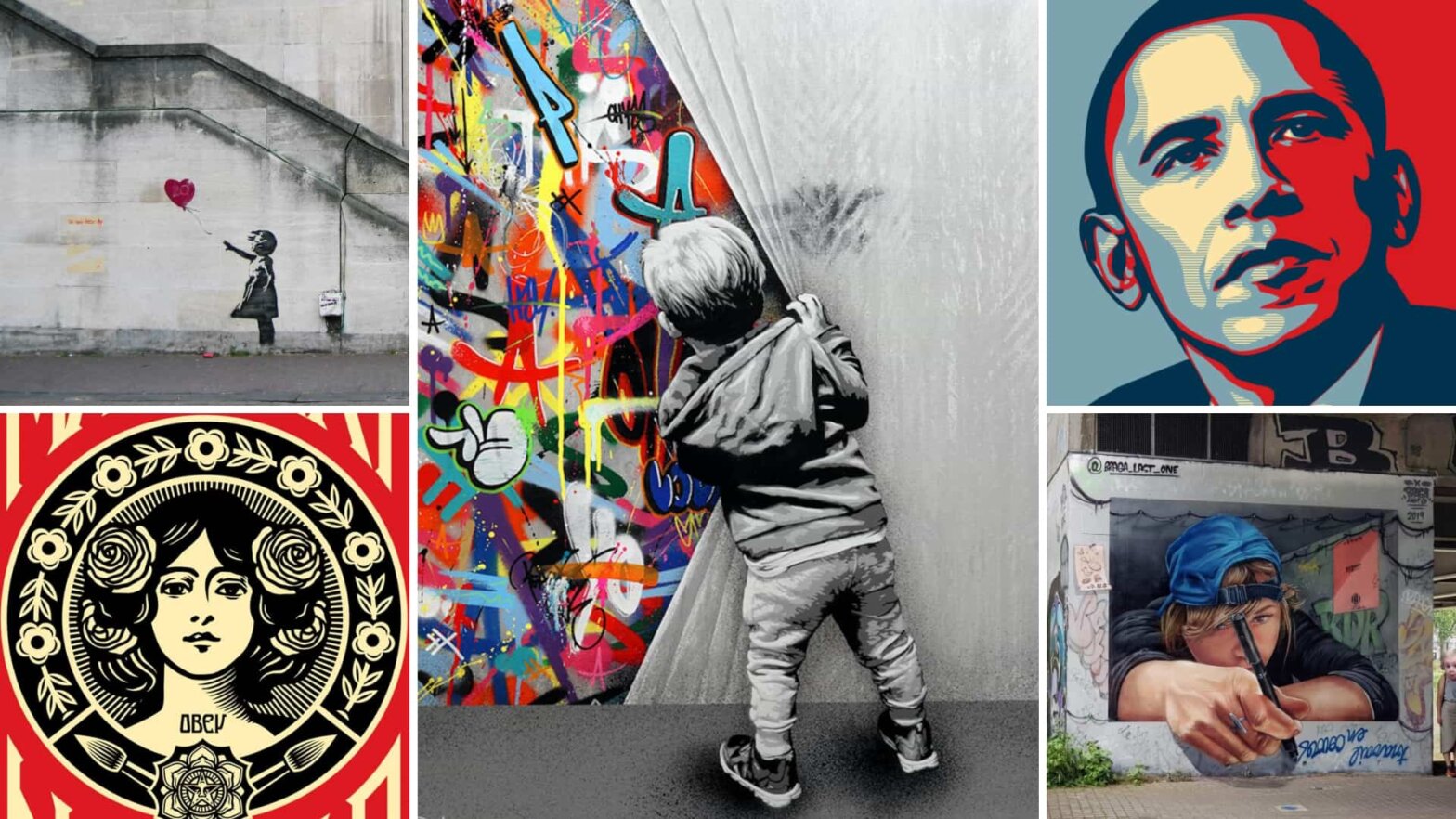There are few art forms without rules. Even though many forms of media demand artistic discretion and a level of subjectivity, typically artists agree to learn the rules before breaking them. Street art is unique that way. But what is street art, exactly? Unlike screenwriting or cinematography, the technical knowledge of street art is limited only as much as one’s imagination is. In this post, we’ll lay out the foundations and history of street art, its characteristics, and some of the most prominent artists.
Street Art Definition
First, let's define street art
Street art has massively evolved over the 20th and 21st centuries. But there is a way to boil it down to basics if you’re just dipping your toes into street art for the first time.
STREET ART DEFINITION
What is Street Art?
Street art is the public and often unsanctioned installation of design and illustrations. Often merely thought of as graffiti, there are many forms it can take. Perhaps the most significant aspect that sets this movement apart is the venue. "Art" as we typically understand it is revered, upheld, or celebrated in galleries or museums. In other words, the context with which we observe the work gives it a value. Art we see on the side of building doesn't usually receive that same hierarchical appreciation.
Street Art Artists:
- Banksy
- Shepard Fairey
- Shamsia Hassani
Often repeated, what’s commonly referred to as “tagging” is a form of street art in which an artist will repeat their unique, custom symbol on countless surfaces, walls, buildings, etc.
These are usually unwelcome and unsanctioned, as they lower property value, sometimes bear a negative connotation, and give a given area the feeling of unkept and unregulated.
Other forms of street art (like detailed murals, carvings, sculptures, and other installations) have come to add nuance to the medium. These have become widely welcomed and sanctioned.
However, whether sanctioned or not, street art typically poses a question or sends a message to society. Read on to find out how exactly that came to be.
Origins Explained
A brief history of street art timeline
Most scholars agree that there may not be a specific moment that marked the inception of street art. However, there is a common thread behind its impetus: a desire to create an antithesis to societal limitations and the status quo.
In 1920s and '30s New York, it’s been recorded that graffiti made its first real appearance. Gangs were tagging the sides of rail cars and various walls around the city. In the 1960s, particularly in the Bronx, more graffiti appeared on the scene, reaching maturation as an art form in the '70s, and peaking with full scale subway murals in the '80s.
This was known as the New York City graffiti boom. As a response to civil unrest, art became a nuisance to the city, but also a refuge for struggling civilians. Due to economic restraints placed on New York City, graffiti removal programs couldn’t function normally, and thus the “throw-up” was born. Instead of more text-based tagging, people would put up larger, full scale art pieces that would now last longer than the government would have liked.
Classic Street Art
Classic street art examples
Even if you don’t feel familiar with the street art scene, there are some pretty famous works you’ve likely seen. This is because a number of street artists have actually become pretty mainstream.
Shepard Fairey is the founder of OBEY clothing, but he is also a graphic designer and artist. He is possibly most famous for his creation of Barack Obama’s “Hope” poster campaign. This was largely considered iconic as a representation of Obama’s campaign but also as a piece of standalone art.
New Yorker art critic Peter Schjeldahl called the poster “the most efficacious American political illustration since Uncle Sam Wants You.”
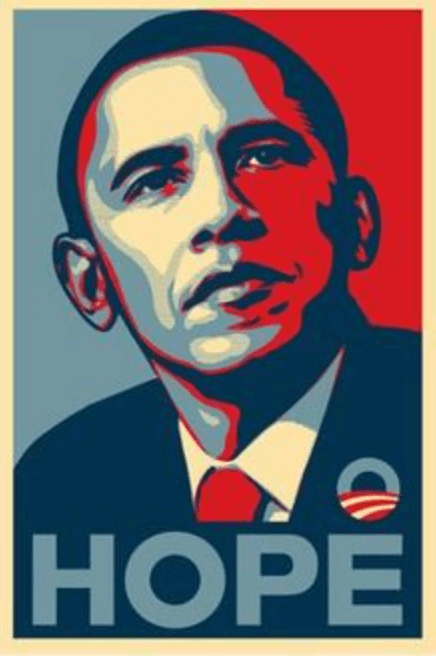
“HOPE” Shepard Fairey, 2008
Fairey is also responsible for the “Make Art Not War” poster, which is an Art Nouveau rendition of the famous 1960s slogan “Make Love, Not War” reiterating the idea that humans should devote time and energy to creative acts, rather than destructive ones.
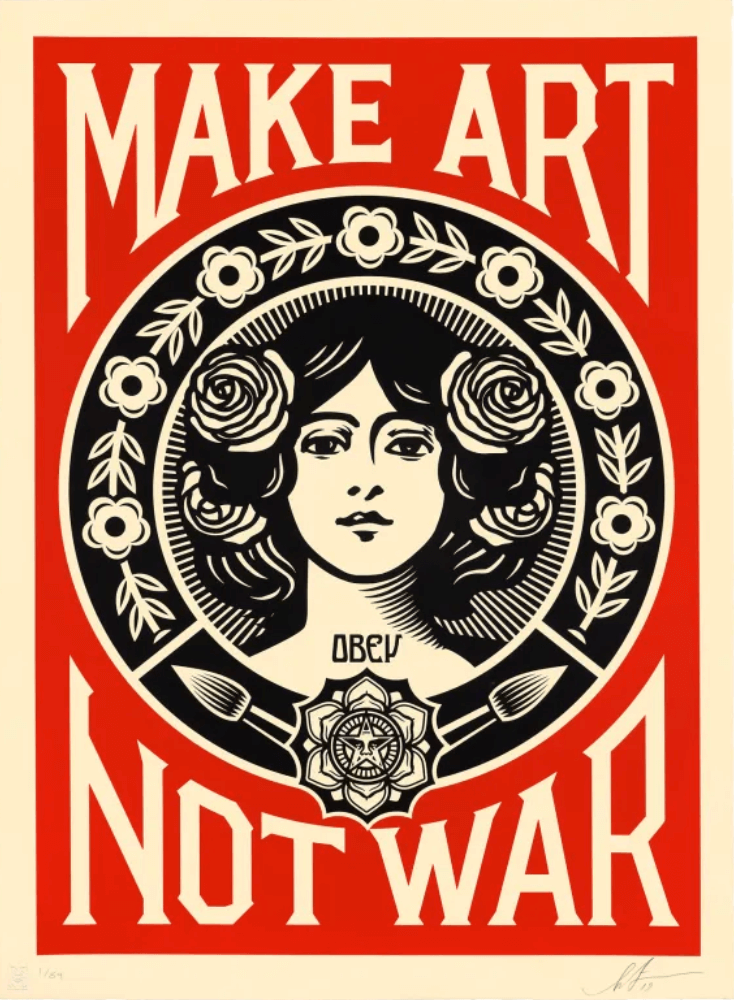
“Make Art Not War” Shepard Fairey, 2019
Shepard Fairey is a staple of street art today, and you can learn more about his perspective on street art at the link below.
Shepard Fairey on Street Art
Possibly one of the most famous and mainstream street artists to date goes by the name Banksy. A pseudonymous artist, Banksy is also a political activist, which is evident in his more famous works. Notably, his works reach beyond paint, and venture into sculpture and borderline performance art.
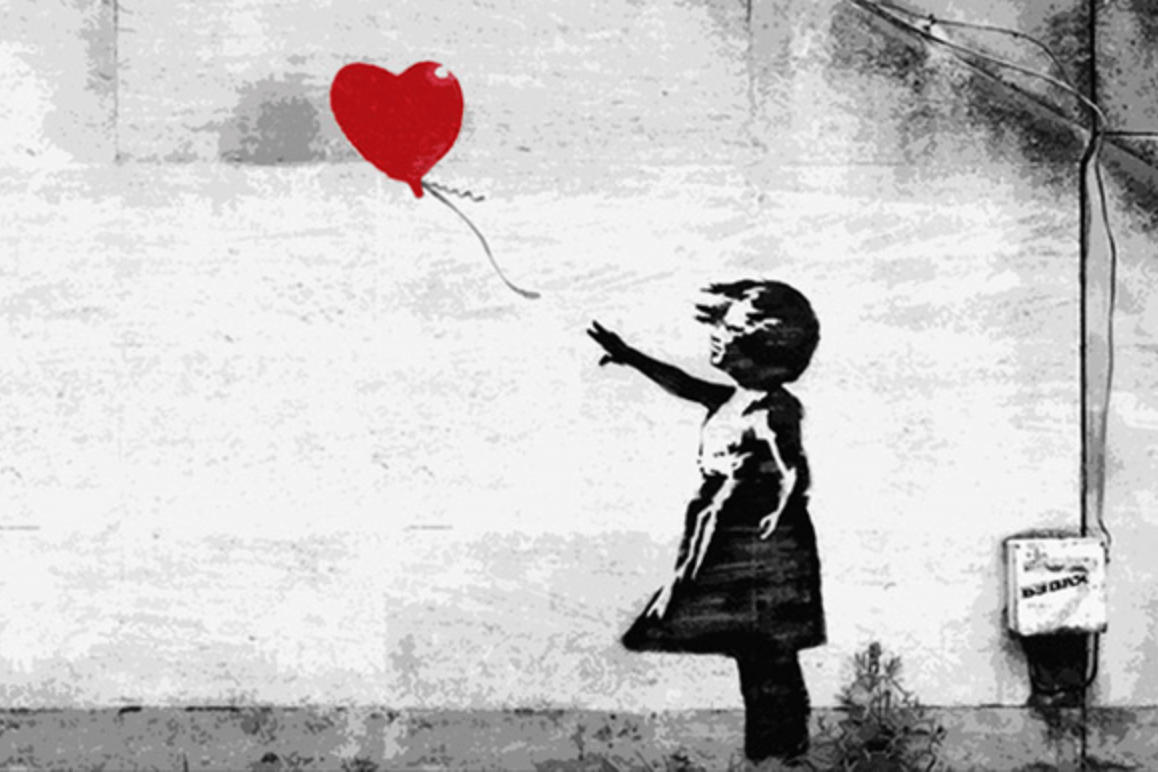
Graffiti vs Street Art • Girl With Balloon, Banksy, 2002
Both daring and cheeky, Banksy has made a name for himself around the globe by using experimental images to comment on the world’s current social fabric.
Modern Street Art Examples
The street art movement today
Street art can be found on the actual street just as much as it can be found in sanctioned art spaces and galleries. All the while remaining a meaningful form of resistance and expression around the world.
Wynwood Walls in Miami, Florida is a fantastic example of sanctioned art with a modern twist. What was a bland warehouse district of Miami actually presented an abundance of blank canvases. These were turned into gorgeous works from artists around the world, thus increasing pedestrian potential.
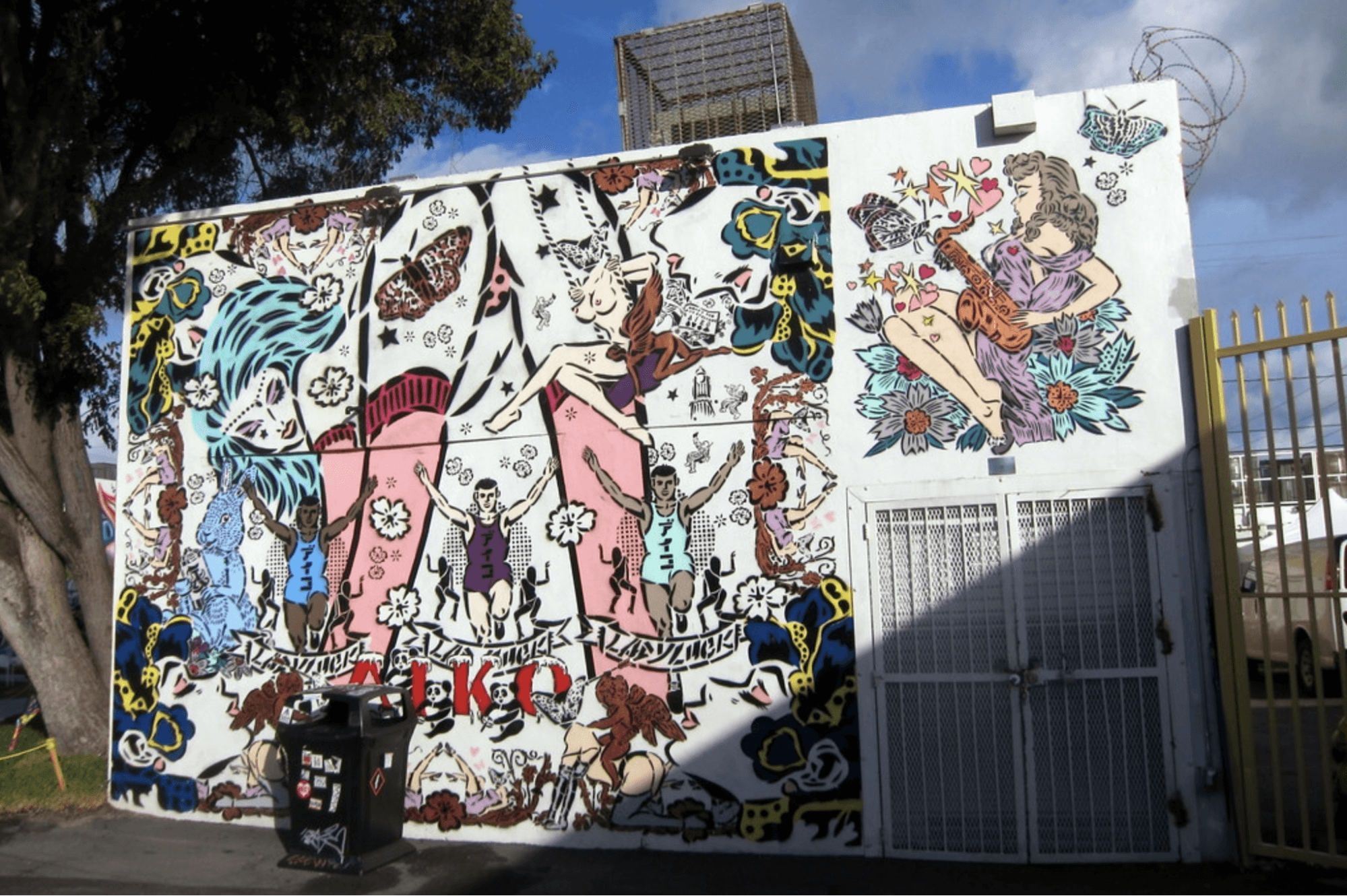
Art from the Streets • Aiko for Wynwood Walls
Wynwood Walls has brought the ever-evolving genre to Miami. Not only offering walking tours of the staple pieces and rotating works alike, but also gallery, restaurant, and event spaces to local businesses. In the video below, you can learn more about the inception of Wynwood Walls.
Wynwood Walls of Change
As you can see, Wynwood Walls has high-calibre, impactful art, setting the standard for art culture as a whole.
Street art doesn’t just appear in metropolitan cities, though. A number of self-taught artists around the world are using this form of expression to make change and create beauty where we may least expect it.
One shining example of this is in Afghanistan. Artist Shamsia Hassani paints murals around Kabul to defy perceptions of what women can accomplish. Check out the video below to learn more about Shamsia and how she uses art to create change.
Afghan Street Artist Shamsia Hassani
It is evident by Shamsia’s work that street art is more than just tagging random walls, but an opportunity for transformation, growth, and introspection.
Uses of Street Art
Does street art influence other media?
Street art has influenced other media in that it allows artists of all kinds to push the boundaries of their craft’s conventions. In particular, modern graphic design and animation have evolved to reflect edgier tastes, even drawing from street art for inspiration.
Street art elevates traditional design elements because it leaves room for energetic, thoughtful choices. Things like advertising would normally necessitate clean, professional design. But modern graphic design can have a more “underground” and youthful aesthetic. Basically, graphics design can be more experimental while still being thoughtful and useful for a brand.
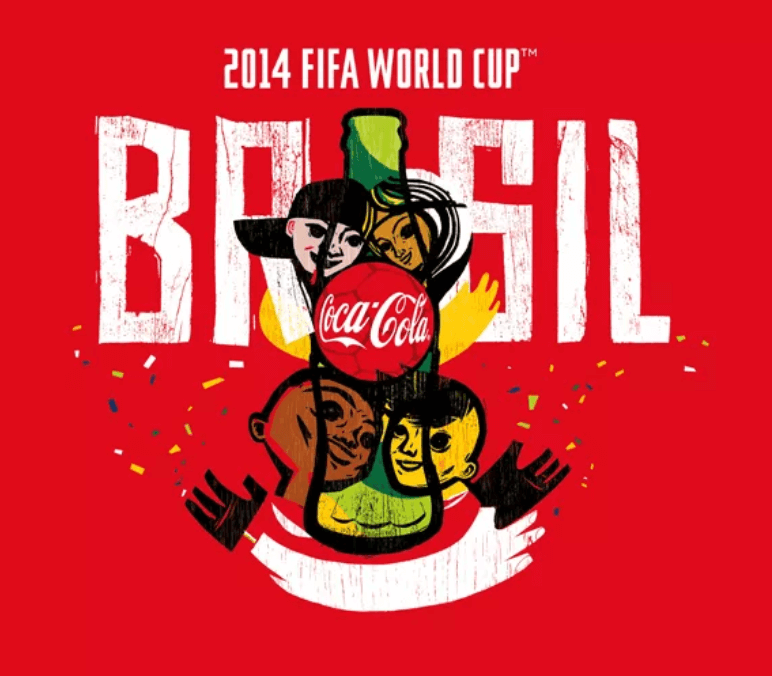
Speto for Coca-Cola and FIFA World Cup, 2014
You can also catch street art influences not just in the story but the animation style of one of the most beloved modern-day animated films, Spider-Man: Into the Spider-Verse.
Spider-Man incorporates street art and graffiti into its plot by way of Miles and Uncle Aaron’s secret shared hobby of secretly painting murals in the web of subways, but also into the style of animation.
It is clearly meant to illicit video game-like visuals, but a lot of it is also reminiscent of street murals and paint-like illustrations.
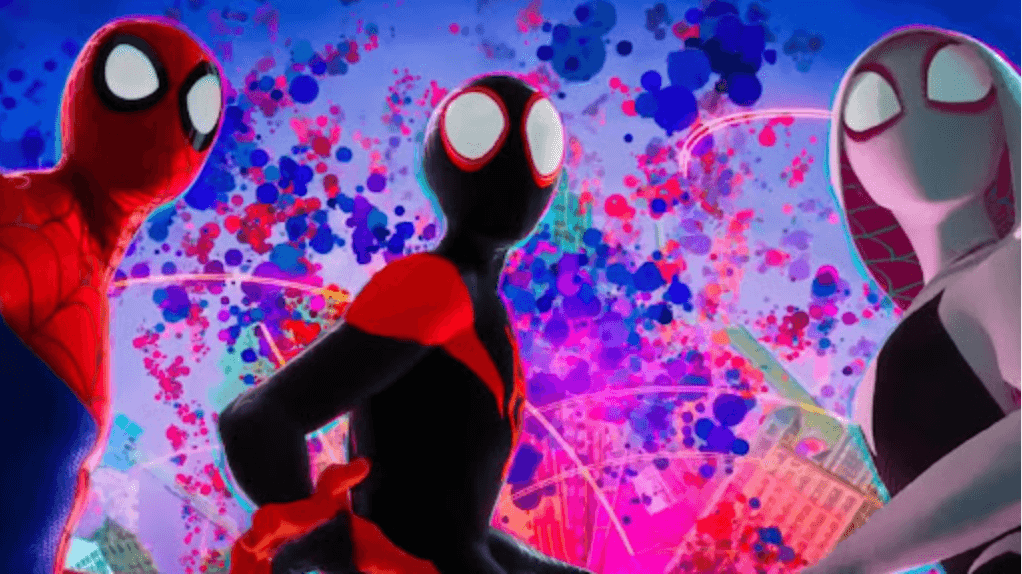
Spider-Man: Into the Spider-Verse, 2018
Films like Spider-Man: Into the Spider-Verse, much like with street art itself, prove that art and its potential is limitless, and there is always room for exploration.
Street art has evolved far past the meaningless scribbles society once considered it to be. Today, it gives artists from around the world a platform (whether for advertising, political commentary, film, or pure self-expression) to create art and societal progress alike.
Most of street art is located where it cannot be owned: on walls, old buildings, highway overpasses. As such, street art is shared publicly, forcing its audiences to consider another way to take the art, and its message, with them.
UP NEXT
Explore More Styles and Movements
This was just one of many fascinating segments of art history. There are many eras, styles, artists, and movements to discover. Let's continue our study by choosing the next stop on your way to becoming an art aficionado. Below you can visit our Art Styles Index, our Art History Timeline, or choose an individual movement.
Showcase your vision with elegant shot lists and storyboards.
Create robust and customizable shot lists. Upload images to make storyboards and slideshows.
